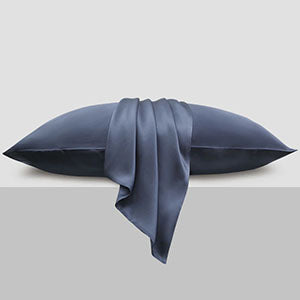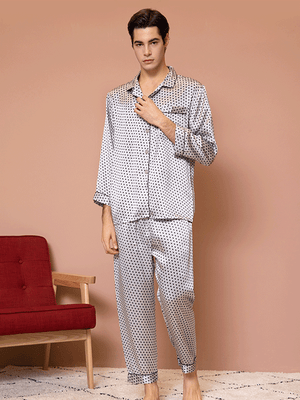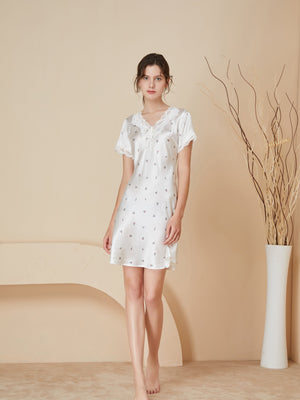Silk vs Cotton Pajamas: Choosing the Perfect Nighttime Attire for Ultimate Comfort
- par {{ author }} wangfred
-

Are you tired of tossing and turning at night, struggling to find the perfect sleepwear? The debate between silk and cotton pajamas has raged for decades, with passionate advocates on both sides. Your choice of fabric can impact everything from temperature regulation to skin health—and even how well you rest. Let’s dive into the luxurious world of sleepwear fabrics to uncover which one deserves a spot in your bedtime routine.
The Basics of Silk and Cotton
Silk, a natural protein fiber produced by silkworms, has been synonymous with luxury for centuries. Its smooth texture and lightweight feel make it a favorite for high-end sleepwear. Cotton, derived from the fluffy fibers of the cotton plant, remains the world’s most popular textile due to its breathability and accessibility. Both materials boast unique properties that cater to different sleep preferences and climates.
Comfort and Sensory Experience
Silk pajamas glide over the skin like a second layer, offering a frictionless feel that’s particularly appealing to side sleepers or those with sensitive skin. The cool-to-the-touch sensation helps regulate body temperature during warmer nights. Cotton pajamas, meanwhile, provide a soft, familiar embrace that many describe as "breathable nostalgia." The fabric’s slightly textured surface can feel more substantial, which some sleepers prefer for a cozy night in.
Temperature Regulation Showdown
When it comes to managing sweat and body heat, these two fabrics take different approaches:
- Silk wicks moisture away from the skin while maintaining airflow
- Cotton absorbs perspiration but may retain dampness
- Silk’s natural thermal properties adapt to body heat
- Cotton’s weave density determines its insulating power
Durability and Care Requirements
Cotton’s rugged charm makes it machine-wash friendly and resistant to pilling. High-quality cotton pajamas can survive years of regular use with proper care. Silk demands more attention—handwashing or delicate cycles, air drying, and careful storage to prevent snags. However, well-maintained silk garments often outlast their cotton counterparts while maintaining their luxurious sheen.
Skin Health Considerations
Both fabrics score points for being hypoallergenic, but silk’s smooth surface gives it an edge for those with eczema or dermatitis. The fabric’s natural resistance to dust mites and allergens makes it ideal for sensitive individuals. Cotton’s breathability helps prevent bacterial growth, though its moisture-retention properties might exacerbate certain skin conditions if worn damp.
Environmental Impact Analysis
Eco-conscious shoppers should consider:
- Silk production requires significant water and energy
- Organic cotton uses less pesticides but more water
- Peace silk alternatives address ethical concerns
- Recycled cotton blends reduce textile waste
Cost Comparison
While silk pajamas typically command higher prices, their longevity and multi-season usability can justify the investment. Cotton offers budget-friendly options at various quality levels, though premium organic varieties may approach silk pricing. Consider cost-per-wear calculations when evaluating these sleepwear options.
Seasonal Performance
Silk’s temperature-regulating properties make it surprisingly versatile:
- Lightweight weaves work for summer
- Layered styles with thermal linings suit winter
Style and Aesthetic Appeal
Silk’s liquid drape and natural sheen create elegant silhouettes that blur the line between sleepwear and loungewear. Cotton offers more structural possibilities, from crisp button-down sets to playful printed patterns. The choice between these fabrics often reflects personal style as much as practical considerations.
Special Use Cases
Post-surgery patients frequently choose silk for its frictionless properties, while athletes recovering from intense workouts might prefer cotton’s moisture absorption. New mothers often appreciate silk’s ease of movement during nighttime feedings, whereas cotton’s durability appeals to parents dressing active children.
As moonlight filters through your bedroom window, the perfect pair of pajamas awaits—whether that means slipping into the liquid luxury of silk or embracing the comforting familiarity of cotton. Your ideal sleep experience depends on understanding how these ancient fabrics interact with your body, lifestyle, and values. Why settle for ordinary sleep when your dream pajamas could be just one informed decision away?












